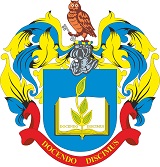Please use this identifier to cite or link to this item:
http://46.63.9.20:88/jspui/handle/123456789/1081| Title: | Аналіз розширення діапазону методів музичного навчання в підготовці майбутніх учителів музичного мистецтва. |
| Other Titles: | ANALYSIS OF EXPANDING THE RANGE OF MUSIC TEACHING METHODS IN THE TRAINING OF FUTURE TEACHERS OF MUSIC ART |
| Authors: | Михаськова, М. |
| Keywords: | методи музичного навчання традиційні та інноваційні методи музичного навчання професійна підготовка вчителів музичного мистецтва method methods of music education traditional and innovative methods of music education professional training future teacher of music art |
| Issue Date: | 2023 |
| Publisher: | Актуальнi питання гуманiтарних наук. |
| Citation: | Михаськова М. Аналіз розширення діапазону методів музичного навчання в підготовці майбутніх учителів музичного мистецтва. Актуальнi питання гуманiтарних наук. 2023. Випуск 59, том 2. С. 322-326. URL: DOI https://doi.org/10.24919/2308-4863/59-2-48 |
| Abstract: | У статті проводиться аналіз і систематизація традиційних та інноваційних методів музичного навчання, які залучаються в професійній підготовці вчителів музичного мистецтва. Автором класифікуються методи музичного навчання за трьома групами (методи організації та здійснення навчально-пізнавальної діяльності (словесні, наочні, практичні, проблемно-пошукові, репродуктивні, індуктивні і дедуктивні, робота під керівництвом викладача, самостійна робота); методи стимулювання навчальної діяльності (формування пізнавальних інтересів, стимулювання обов’язку і відповідальності в навчанні, заохочення і засудження); методи контролю і самоконтролю (усного та письмового контролю, тестового, графічного, програмного контролю, практичної перевірки, самоконтролю та самоперевірки) та здійснюється аналіз спеціальних традиційних методів, які були включені до цих груп українськими дослідниками музичної педагогіки за останні роки.
Інноваційні методи музичного навчання автором поділяються відповідно до трьох основних груп, оскільки вони допомагають майбутнім педагогам-музикантам розкрити свою індивідуальність і самобутність у проведенні уроків музичного мистецтва та у вивченні музичних творів (вокальних, інструментальних, хорових тощо).
Взаємодоповнення пропонованих методів допомагає налагодити процес взаємодії учасників навчального процесу, сприяє урізноманітненню шляхів обміну інформацією, дозволяє спільно вирішувати проблеми засвоєння теорії, моделювати ситуації практики, оцінювати дії колег і свою поведінку.
Автор статті пропонує звернути увагу на порівняння можливостей використання традиційних та інноваційних методів навчання музичного мистецтва за місцем і роллю основних учасників навчального процесу, характером і змістом освітньої діяльності, взаємодією та орієнтирами навчання. The article analyzes and systematizes traditional and innovative methods of music education, which are involved in the professional training of teachers of music art. The author classifies the methods of music education into three groups (methods of organization and implementation of educational-cognitive activities (verbal, visual, practical, problemsearching, reproductive, inductive and deductive, work under the guidance of a teacher, independent work); methods of stimulating educational activities (formation of cognitive interests, stimulation of duty and responsibility in education, encouragement and condemnation); methods of control and self-control (oral and written control, test, graphic, programmed control, practical check, self- control and self-check)) and the analysis of special traditional methods, which were included in these groups by Ukrainian researchers of music pedagogy in recent years, has been carried out. Innovative methods of music education by the author are divided according to three main groups, because they help future music teachers to reveal their individuality and originality in conducting lessons of music art and in studying musical works (vocal, instrumental, choral, etc.). The complementarity of the proposed methods helps to establish the process of interaction of the participants of the educational process, contributes to the diversification of the ways of information exchange, allows to jointly solve problems of theory, simulate practical situations, evaluate the actions of colleagues and own behavior. In the article, it is proposed to pay attention to the comparison of the possibilities of using traditional and innovative methods of teaching music art according to the place and role of the main participants of the educational process, the nature and content of educational activities, interaction and orientations of learning. The article states that the purpose of using methods (traditional and innovative) is to expand, deepen and detail the scientific knowledge acquired by future teachers-musicians, inculcate skills and abilities, develop scientific thinking and communication skills of students of higher education institutions. |
| URI: | DOI https://doi.org/10.24919/2308-4863/59-2-48 http://46.63.9.20:88/jspui/handle/123456789/1081 |
| ISSN: | 2308-4855 (Print) 2308-4863 (Online) |
| Appears in Collections: | Кафедра музикознавства, інструментальної підготовки та методики музичної освіти |
Files in This Item:
| File | Description | Size | Format | |
|---|---|---|---|---|
| Михаськова М. Аналіз розширення діапазону методів музичного навчання в підготовці майбутніх учителів музичного мистецтва.pdf | 376,81 kB | Adobe PDF |  View/Open |
Items in DSpace are protected by copyright, with all rights reserved, unless otherwise indicated.
